Value Midrange Common Components
While AMD and Intel architectures differ in sockets and sometimes memory configurations, there is more that is the same in the two systems than there is that is different. For that reason the Intel and AMD Value Midrange Systems share a number of common components.
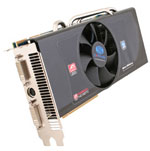 |
For video card best value we have paired the Sapphire Radeon HD 4870 1GB with both the Intel and AMD systems. As pointed out in the recent Holiday 2008 GPU Guide, the 4870 1GB is the minimum card we use internally for gaming comparisons. The Sapphire was our guide choice, but $230 seems the going rate for the 4870 1GB these days. It is available from MSI, Diamond, ASUS, HIS, Power Color, and others so you can shop for the best buy.
On the Intel system, the Gigabyte GA-EP45-UD3P motherboard provides a second PCI x16 slot. Video performance can be improved even further by adding a second Radeon HD 4870 1GB in CrossFire mode. You can also start with two 4870 512MB video cards that are now available for as little as $180 each from Power Color. This will provide 4870 CrossFire for a video card cost for both cards of just $360 total. The motherboard choice for AMD is the Foxconn A79A-S, which also provides multiple x16 slots for CrossFire. The same video options apply to the AMD Value Midrange system.
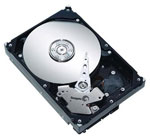 |
Hard drive capacity continues to grow, as you can see in our selection of the Seagate Barracuda 1TB drive (1000GB). While the Seagate 1.5TB drive was plagued with problems at its release, the performance and reliability of the 1TB Seagate has been excellent in our testing so far. For a price of around $100 the value is incredible. While there are differences between hard drives, outside of running benchmarks most people aren't likely to notice the difference in performance between Western Digital, Seagate, Samsung, Hitachi, and other major brands. All are worthy of consideration if the price per gigabyte (or terabyte) is right.
 |
We feel the optical drive for a best value midrange system needs to play Blu-Ray disks. The flexible LG GGC-H20LK has the ability to read both Blu-Ray and HD format disks. It also can burn DVDs at 16x speed in single or dual-layer formats. It cannot, however, burn 25GB/50GB Blu-Ray disks; adding that capability raises the cost to around $200 to $250. BD burners like the $200 LITE-ON 4X BD-R 12X DVD+R 4X Blu-ray DVD-ROM or the $230 LG 6X Blu-Ray Burner GGW-H20LK are good choices.
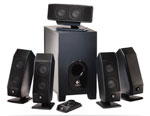 |
Cases are often very personal choices when it comes to features, but the Cooler Master RC-690-KKN1-GP is one of our favorites and it is also very well regarded by our readers. It comes standard with three 120mm fans for excellent cooling and low noise, and the power supply mounts in the bottom of the case. Audio, USB, Firewire, and eSATA ports are on top of the case, which we find an ideal location. The front bays are also ventilated metal mesh for cooling and appearance. If you prefer a more traditional case configuration, the Cooler Master Mystique, also selling for $80, mounts the PSU on top, provides font panel jacks, and is loaded with expansion ports and two 120mm fans.
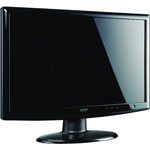 |
The last major component to discuss is the display, and here the tilt was toward best value at full 1080p HD (1920x1080) resolution. The new class of 16:9 21.5" LCD monitors provide true 1080p resolution at the break-through price of just $199. That stellar value shows just how far LCD technology has progressed. If your budget allows, or you just prefer a slightly bigger screen at the same resolution, you can move up to a 24" 16:9 1080p LCD that is selling today for around $300. Alternately, you can downgrade the resolution to 1680x1050 for slightly larger pixels (i.e. more readable text) if you purchase a 22" LCD and save a bit of money.
While the Creative Sound Blaster X-Fi Xtreme Audio is not the best sound card on the market, it is definitely tops in game compatibility. This Creative X-Fi card does a good job with audio, won't break the bank at $50, and it is a great choice for either set of powered speakers. Some would argue that onboard sound is all you need for a $1500 system, and if you are inclined to agree or have a really tight budget, you can save $50 on either the Intel or AMD Value Midrange builds just by using onboard sound.
 |
The Logitech X-540 has been a perennial favorite of users as a reasonably priced but good performing, powered 5.1 computer speaker system. It will certainly not challenge the performance of a separate Dolby amplifier powering audiophile speakers, but it will provide surprisingly good sound for the price.
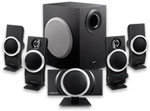 |
The Creative Inspire T6100 76 Watts 5.1 Speaker System is a similar powered speaker system that is selling at Amazon for just $57. The Creative speaker system is our choice in the AMD Value Midrange system, but either speaker system is a good choice for these Value Midrange builds.
Our choice for the top of the midrange is the well-regarded Logitech G51 system. This is mentioned only because the G51 is now just $90 after a $40 rebate, so if you want a better speaker system your net cost for choosing the G51 instead is just $10 more than the Logitech X-540 or $33 more than the Creative Inspire T6100.
 |
These are clearly desktop systems, so the keyboard and optical mouse are the basic Microsoft OEM kit. If you have more specific needs or a favorite gaming mouse you likely know exactly what you prefer. The Microsoft pair is very capable for most. For greatest compatibility, we have chosen Microsoft Vista Home Premium OEM as the Operating System. Unless you have specific networking and special enterprise security needs there is no real reason to pay the extra for Vista Ultimate. We personally recommend the 64-bit version now, but a select few applications still need a 32-bit OS (i.e. Dragon NaturallySpeaking and GameTap to name just two).










77 Comments
View All Comments
Wesley Fink - Tuesday, January 13, 2009 - link
The problem with quality 500-550w power supplies is that the ones I know about actually cost more than the 650W Corsair we recommended in this Guide. The Corsair is a superb 80 Certified PS that will do the job well for you and cost about $80.I did find a new Tuniq Potency 550PS that is $40 after a $40 rebate with an initial cost of $80. You can link to it at newegg at http://www.newegg.com/Product/Product.aspx?Item=N8...">http://www.newegg.com/Product/Product.aspx?Item=N8.... It is a new PS we have not yet tested, but we generally trust the Tuniq brand and this PS is 80 Certified for your protection.
Seasonic and hec both have excellent reputations among Power Supplies and they all make many Power Supplies sold under other premium names.
7Enigma - Tuesday, January 13, 2009 - link
Well I'm going to be your guinea pig, I couldn't pass up the cheap price. I currently have an Antec Neopower480w from my last build (4 years ago?), which while good (and modular which I loved) surely can't be as efficient or hopefully as stable as the Potency. Let's hope the 500-550w roundup includes the Tuniq Potency 550PSCharger71 - Monday, January 12, 2009 - link
So the latest and fastest AMD chips are midrange? What would high end be? dual socket?I don't agree with these builds for midrange. But I understand how they fit in your 1-2k price range. Great performing parts are cheaper now days, like I think you mentioned. You really need to adjust your definition of midrange because your selections leave a large bucket of "low-end" parts out there, which doesn't make sense to me.
Wesley Fink - Tuesday, January 13, 2009 - link
High-End is definitely Core i7. We barely managed to build a complete balanced $2000 system with the lowest cost Core i7 920 that sells for $295. There are two i7 processors above that at $600 to $1000.For systems below $1000 you can check out our Guide from two weeks ago at http://www.anandtech.com/guides/showdoc.aspx?i=348...">http://www.anandtech.com/guides/showdoc.aspx?i=348....
shinpickle - Monday, January 12, 2009 - link
if you are just making recipes from newegg without building anything??? nothing wrong with that, but you should explicitly state such, if would I build a system from your picks only to find there's a known incompatibility issue you missed, expect some hate-mail.without building you really have no proof of the performance per dollar, these articles are very different from most anand articles based on lab research.
Wesley Fink - Monday, January 12, 2009 - link
We really do need an edit function here. I meant the i7/Gigabyte combo has been in our labs. The Foxconn used with the Phenom II 920 has also been in our labs for quite a while, as has the Asus motherboard used with the Phenom II 940.Believe me when I tell you Gary and Anand scream loudly if we plan to suggest a motherboard they know has been problematic. Those recommendations don't make it to the web page.
Wesley Fink - Monday, January 12, 2009 - link
As you should have figured out from the article description the AnandTech staff has actually used and tested most of the components in the system. EACH Editor has input on what is selected in the guides.If I question the initial selections, or we have major shifts like the Phenom II launch, I talk with the Editor affected to make sure the changes correspond to their experience with those components or if their recommendation shave changed. We definitely have experience with all the major components in the system, including all motherboards.
We have also built systems that are similar, but not exactly the same, as most of these configurations. With Phenom II launched last Thursday Editors have worked with the recommended motherboards in the Phenom II systems, but that was with a 940. We don't have direct experience with the 920 on these boards, but we have no reason to expect it would behave differently than the 940 on these boards. The i7/Foxconn has been in the motherboard lab for quite a while, as has the Core 2 Duo/Gigabyte configuration.
Zorblack1 - Monday, January 12, 2009 - link
I'm sorry this is silly. If Nvidia was to release a new "highest performing" video card tomorrow that gave the same performance as a 2 year old ATI video card with worse performance/clock cycle everybody would be dooming Nvidia and bashing the company.nubie - Monday, January 12, 2009 - link
I would quit complaining if I were you, becuase if AMD remains uncompetitive then Intel processors would cost twice what they do now.Phenom I was a good processor for servers, Phenom II is a much better processor, and is finally a recommendation for mid-range and entry-level builds again.
Performance/clock isn't a good metric when determining performance/cost.
I am not necessarily going to purchase an AMD over a Q6600 clocked at 3.2Ghz, but I might if the performance is better.
nubie - Monday, January 12, 2009 - link
dammit, because ^^